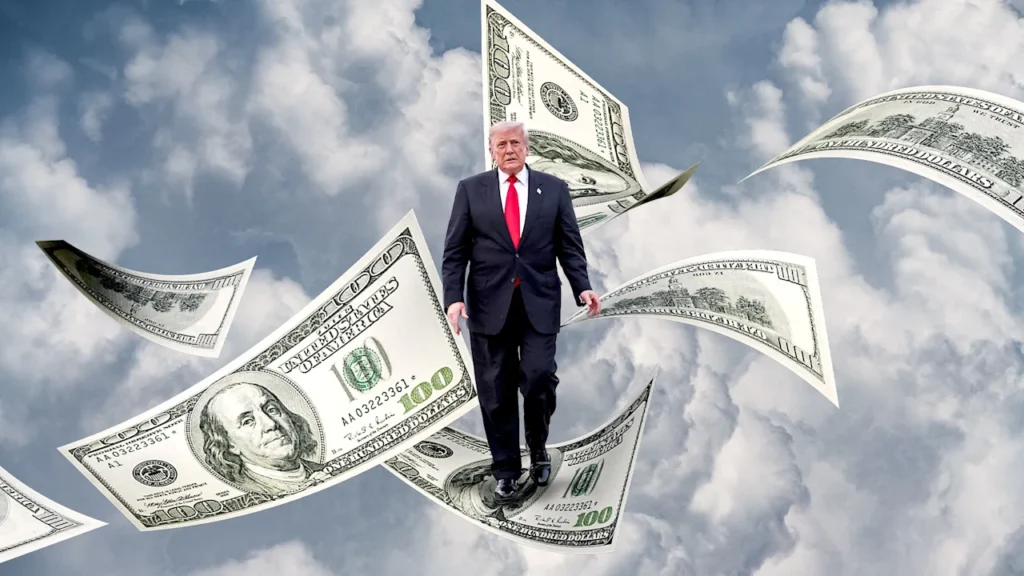
With his tariff policies potentially under threat from the Supreme Court, President Trump over the weekend took to Truth Social to float the idea of doling out a $2,000 “dividend” to every person in America who is not high income.
Although experts have expressed doubt about the fiscal feasibility of such a proposal—and Trump’s own treasury secretary conceded that he knew of no such plan to send out checks—Trump’s post is likely to spark a fresh wave of unsourced news stories designed to induce clicks and raise false hopes among millions of Americans who could actually use a stimulus boost.
Here’s what to know:
What did Trump propose?
In a Truth Social post on Sunday that began with the sentence, “People that are against Tariffs are FOOLS!,” Trump suggested that the government might distribute some tariff revenue directly to Americans.
“Record Investment in the USA, plants and factories going up all over the place. A dividend of at least $2000 a person (not including high income people!) will be paid to everyone,” Trump posted.
However, Treasury Secretary Scott Bessent downplayed the idea when he made the rounds on Sunday talk shows. On ABC’s This Week, after conceding that he hadn’t spoken to Trump about the issue, he speculated that the dividend could come in the form of “tax decreases.”
Fast Company reached out to the White House and Treasury Department for additional details. We’ll update this post if we hear back.
Are $2,000 tariff dividend checks feasible?
Not likely. As Bloomberg pointed out, such a plan could cost anywhere from $300 billion to $500 billion. Even on the lower end, that’s more than 10 times more than the government has been generating in monthly customs receipts.
John Arnold, cochair of Arnold Ventures, posted on X that sending checks that size to every non-wealthy person would still cost more than the Tax Foundation’s projected tariff revenue for all of 2026.
Why does this sound familiar?
It’s not the first time that Trump has publicly entertained the idea of sending out large checks to Americans.
Recall that when his Department of Government Efficiency (DOGE) was slashing government jobs earlier this year, the president appeared to endorse an idea first proposed on social media to distribute $5,000 checks to taxpaying households.
Although no such plan ever materialized, it didn’t stop news websites from posting updates about the supposed forthcoming payments for months after the fact
What happens next?
Expect a deluge of articles over the next days and weeks (and possibly months) about the tariff dividend checks, purportedly explaining who qualifies for them, speculating about possible timelines, and just generally flooding the zone.
During the COVID-19 pandemic five years ago, website owners discovered that stories about stimulus checks could generate massive web traffic.
Except at that time, there was lots of legitimate news to report: The Internal Revenue Service (IRS) distributed three such payments during the early pandemic years, and in many cases did so in a glitch-prone way that caused confusion among would-be recipients.
Although the IRS distributed the final stimulus checks (aka Economic Impact Payments) for the 2021 tax year, in a way, the news cycle never stopped.
Rumors of a fourth stimulus check persisted for months after that, followed by the emergence of increasingly sketchy content farms that seemed to exist solely for the purpose of spreading false details about nonexistent government stimulus plans, gaming Google’s trending searches, and generating clicks in bad faith.
As Fast Company reported last year, Google has sometimes moved to remove these sites from search results when made aware of them, but it’s a bit like a game of whack-a-mole. The websites tend to operate overseas, and they sometimes repurpose dormant URLs that have already built up a search history and reputation.
